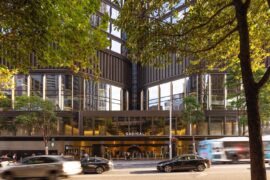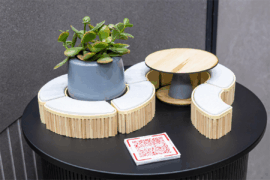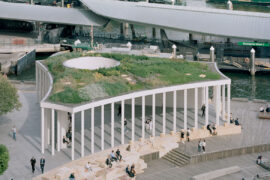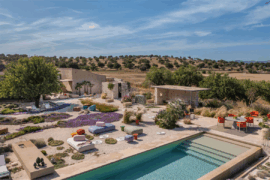As we look to improve the energy efficiency in commercial buildings, window coverings tend to be overlooked. This whitepaper outlines why this is a mistake

February 4th, 2020
Commercial buildings (such as shops, hotels, restaurants, offices, industrial buildings, schools, hospitals, etc.) are responsible for approximately 10% of Australia’s total greenhouse gas emissions. Like residential dwellings, they represent a significant proportion of our climate problem. Every effort should be made to reduce the amount of energy they consume and the amount of carbon they produce.
The good news is that the tools required to make these changes already exist. By using only currently available technologies and methods, the building sector (including both the residential and non-residential sectors) has the means to reduce its greenhouse emissions by 23% by 2030.
The ongoing impasse surrounding Australia’s climate policy, only make the promise of improved energy efficiency more important. Considering the current political climate, in other words, it is more likely to happen than a shift from fossils fuels to renewables.
When the question of how to improve energy efficiency in commercial buildings is raised, one important part of the equation – namely, high quality window coverings – tends to be overlooked.
This whitepaper outlines why this omission is a mistake. Examining the various types of commercial window coverings available and the materials used in their manufacture, it makes the case for window coverings as an important element of the energy efficiency picture for commercial buildings.
"If the document hasn't automatically downloaded in 10 seconds, download here."
Please note by accessing advertiser content your details may be passed onto the advertiser for fulfilment of 'the offer' and also permits the advertiser to follow up the fulfilment of the offer by email, phone or letter. The subscriber also permits further communication from indesignlive.com.
INDESIGN is on instagram
Follow @indesignlive
A searchable and comprehensive guide for specifying leading products and their suppliers
Keep up to date with the latest and greatest from our industry BFF's!

Rising above the new Sydney Metro Gadigal Station on Pitt Street, Investa’s Parkline Place is redefining the office property aesthetic.

From the spark of an idea on the page to the launch of new pieces in a showroom is a journey every aspiring industrial and furnishing designer imagines making.

Rising above the new Sydney Metro Gadigal Station on Pitt Street, Investa’s Parkline Place is redefining the office property aesthetic.

In creating the coastal holiday haven ‘le paix’, owner/developer Ben Flint, founder of Greystone Constructions, leaned into a sophisticated Mediterranean feel.

The 2024 Sustainability Awards Winners bestowed its honours on 18 winners, with 10 others receiving honourable mentions — a small gesture for contributions that loom large in our shared narrative of sustainability.

In the bustling coastal corridor between the Gold Coast and Brisbane, the new Distillery Road Markets precinct has become a major drawcard for tourists and locals alike. At the heart of this creative redevelopment of a former industrial precinct is The FED, which stands for Food, Entertainment and Dining.
The internet never sleeps! Here's the stuff you might have missed

Pier Pavilion by Besley & Spresser provides a refreshing, architecturally thoughtful and versatile public space by the water at Barangaroo.

Entertaining outdoors is fundamental to Italian culture, and homes, hotels and restaurants embrace patios, terraces and gardens that celebrate scenery, climate and comfort.